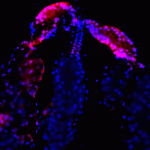About
Current knowledge of dengue virus (DENV) transmission provides, at best, only a partial understanding of a complicated and dynamic system with a public health track record that has more failures than successes. An important part of the problems is that the foundation for contemporary interventions includes a series of longstanding, but untested, assumptions based on a relatively small portion of the human population; i.e., people who are convenient to study because they manifest clinically apparent disease. Approaching dengue from the perspective of people with overt illness has produced an extensive body of valuable literature. It has not, however, fully embraced heterogeneities in virus transmission dynamics that are increasingly recognized as key missing information in the struggle to control the most important insect-transmitted viral infection of humans. Only in the last 20 years there have been significant efforts to carry out comprehensive longitudinal dengue studies. Our research team was integrally involved in two prominent longitudinal dengue research projects in Iquitos, Peru and Kamphaeng Phet, Thailand. Our proposed project represents the next crucial step in this line of inquiry. By studying people across the entire continuum of disease, including people with clinically inapparent and mild infections, we aim to quantify heterogeneities in human variables that affect DENV transmission dynamics and prevention. To do this, we will exploit the infrastructure we assembled over the past 14 years at our Iquitos study area. Our project aims to help fill the void between understanding transmission dynamics and effective disease prevention by defining, for the first time, the contribution of the understudied majority of DENV infected people (the estimated 294 million with inapparent and mild infections) and the contributions of epidemiological, entomological, and socio-behavioral sources of heterogeneity to the dynamics of DENV transmission. By accounting for factors underlying variation in each person’s contribution to transmission we will be able to better determine the type and extent of effort needed to prevent virus transmission and, thus, provide new insights for improved dengue prevention.



